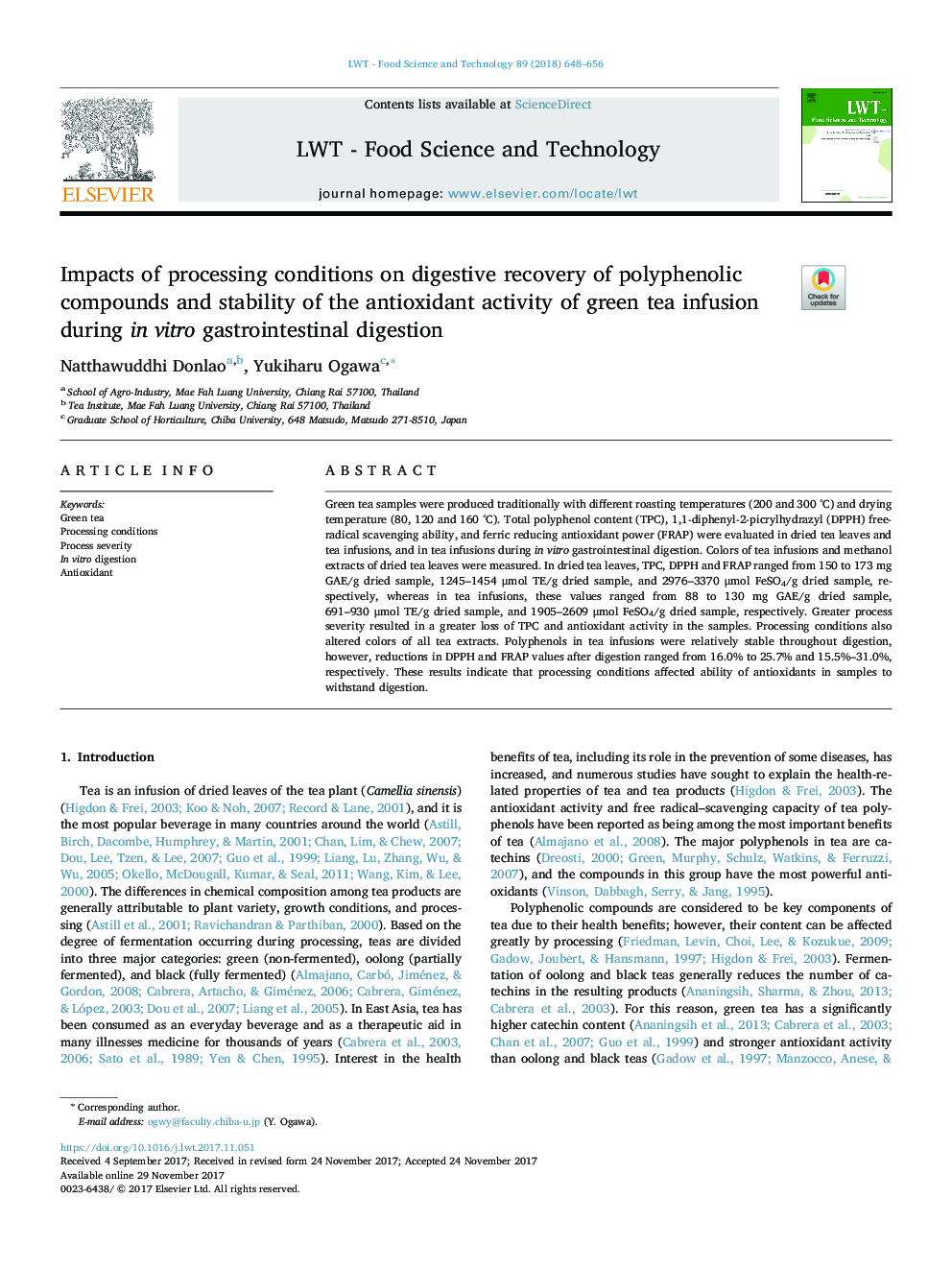| Article ID | Journal | Published Year | Pages | File Type |
|---|---|---|---|---|
| 8892074 | LWT - Food Science and Technology | 2018 | 9 Pages |
Abstract
Green tea samples were produced traditionally with different roasting temperatures (200 and 300 °C) and drying temperature (80, 120 and 160 °C). Total polyphenol content (TPC), 1,1-diphenyl-2-picrylhydrazyl (DPPH) free-radical scavenging ability, and ferric reducing antioxidant power (FRAP) were evaluated in dried tea leaves and tea infusions, and in tea infusions during in vitro gastrointestinal digestion. Colors of tea infusions and methanol extracts of dried tea leaves were measured. In dried tea leaves, TPC, DPPH and FRAP ranged from 150 to 173 mg GAE/g dried sample, 1245-1454 μmol TE/g dried sample, and 2976-3370 μmol FeSO4/g dried sample, respectively, whereas in tea infusions, these values ranged from 88 to 130 mg GAE/g dried sample, 691-930 μmol TE/g dried sample, and 1905-2609 μmol FeSO4/g dried sample, respectively. Greater process severity resulted in a greater loss of TPC and antioxidant activity in the samples. Processing conditions also altered colors of all tea extracts. Polyphenols in tea infusions were relatively stable throughout digestion, however, reductions in DPPH and FRAP values after digestion ranged from 16.0% to 25.7% and 15.5%-31.0%, respectively. These results indicate that processing conditions affected ability of antioxidants in samples to withstand digestion.
Related Topics
Life Sciences
Agricultural and Biological Sciences
Food Science
Authors
Natthawuddhi Donlao, Yukiharu Ogawa,
